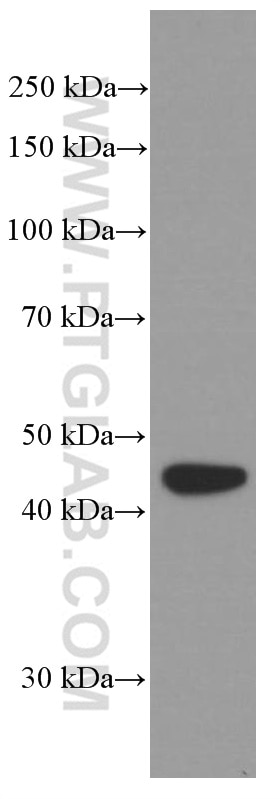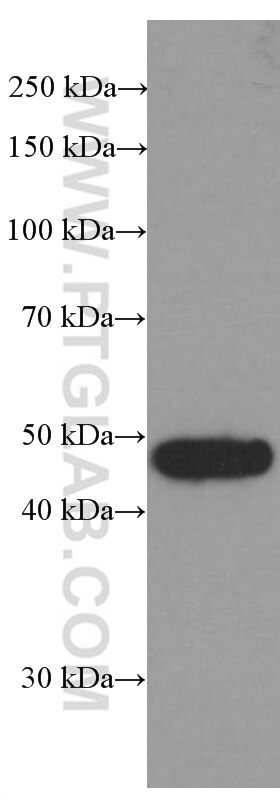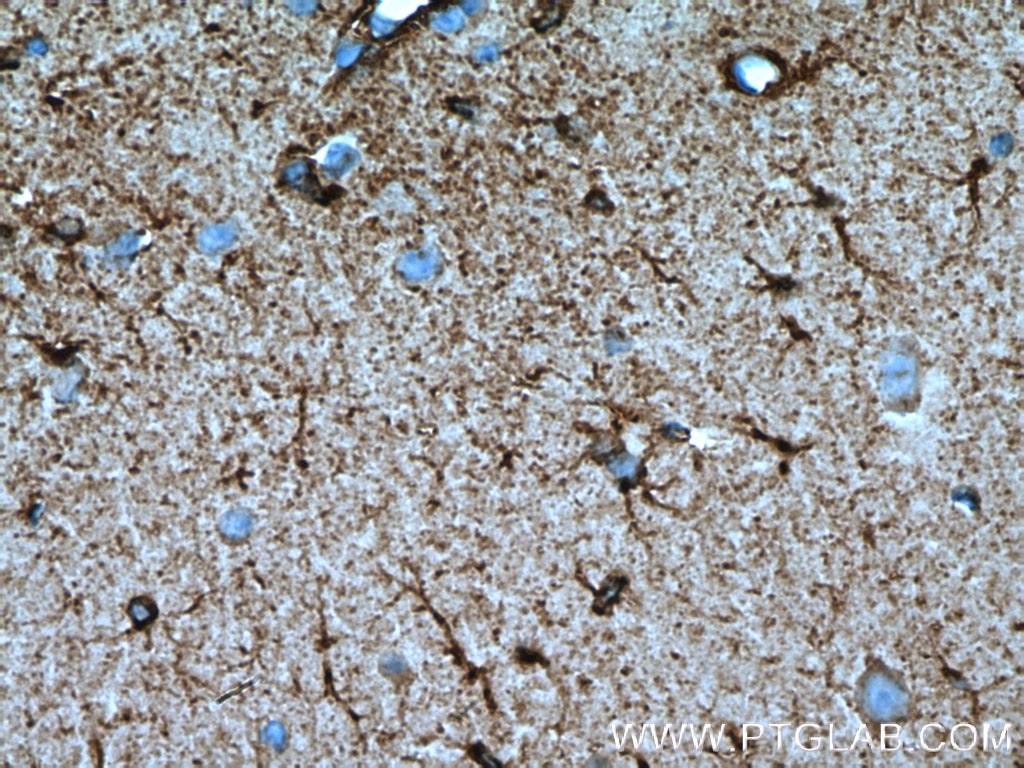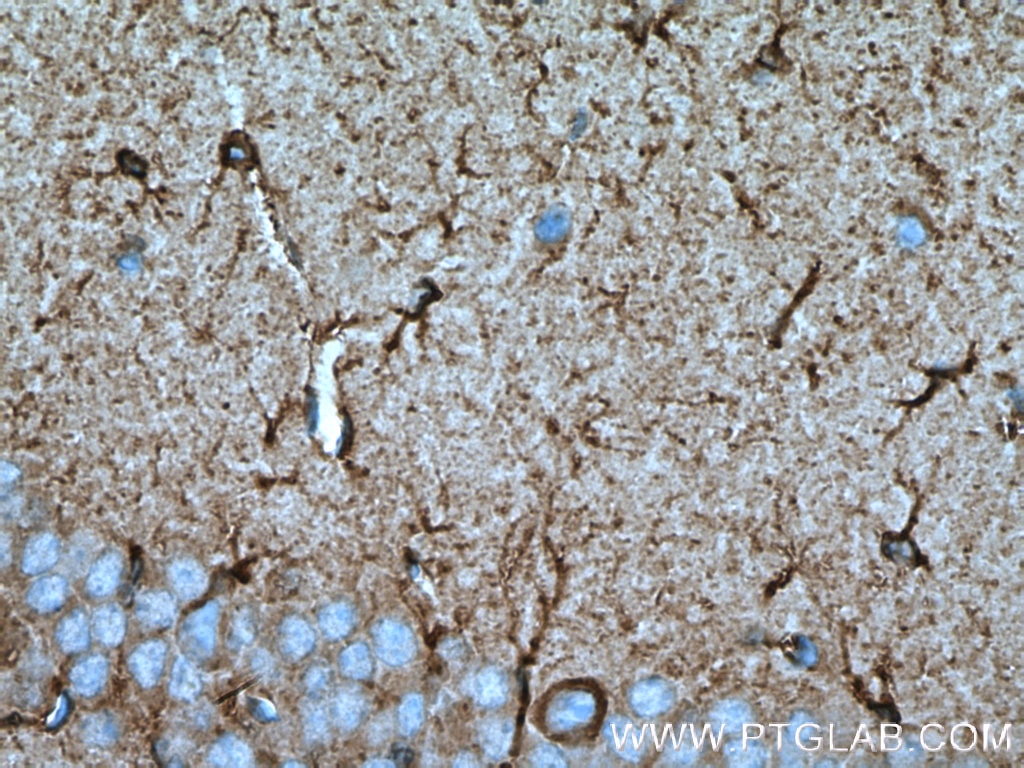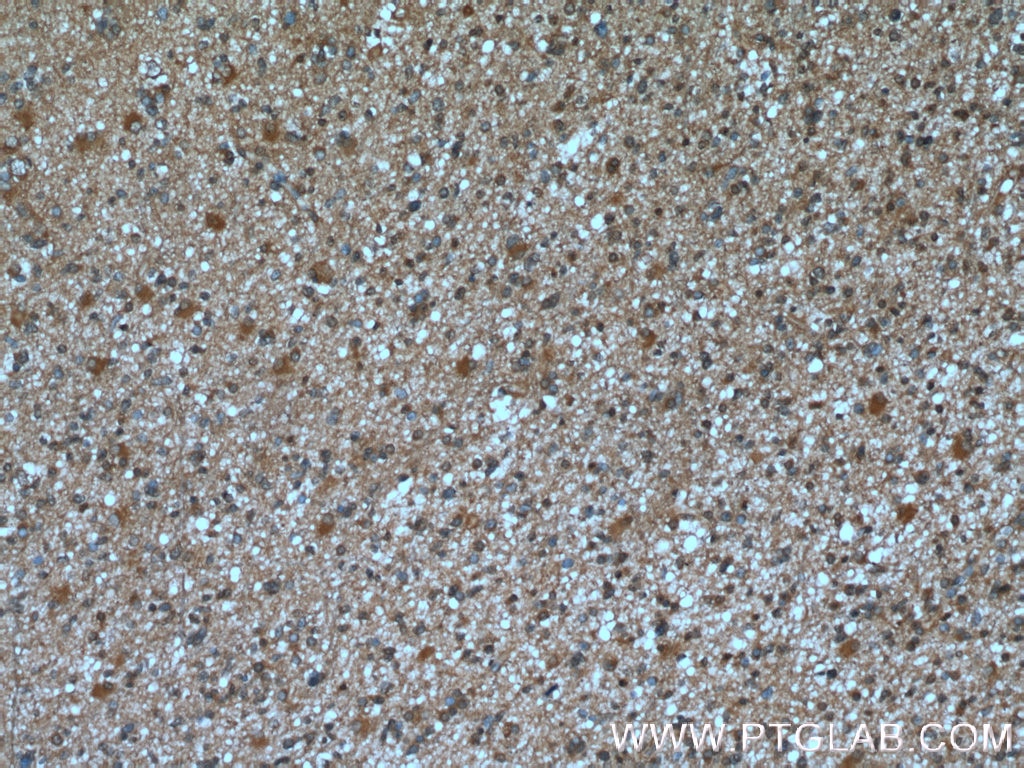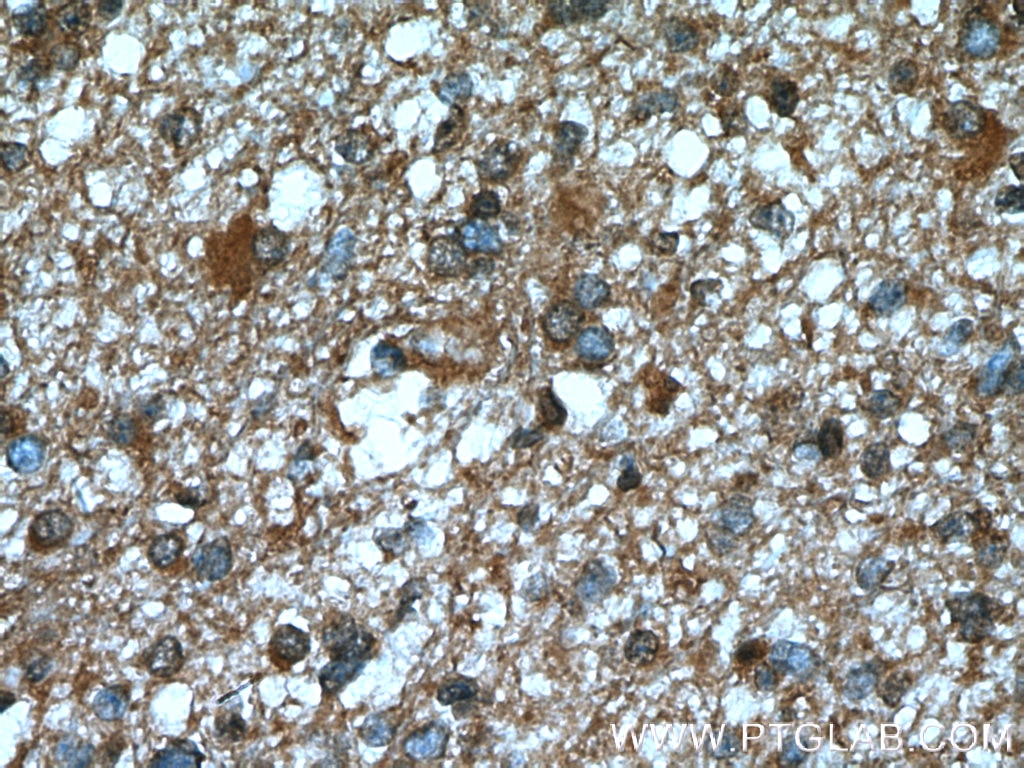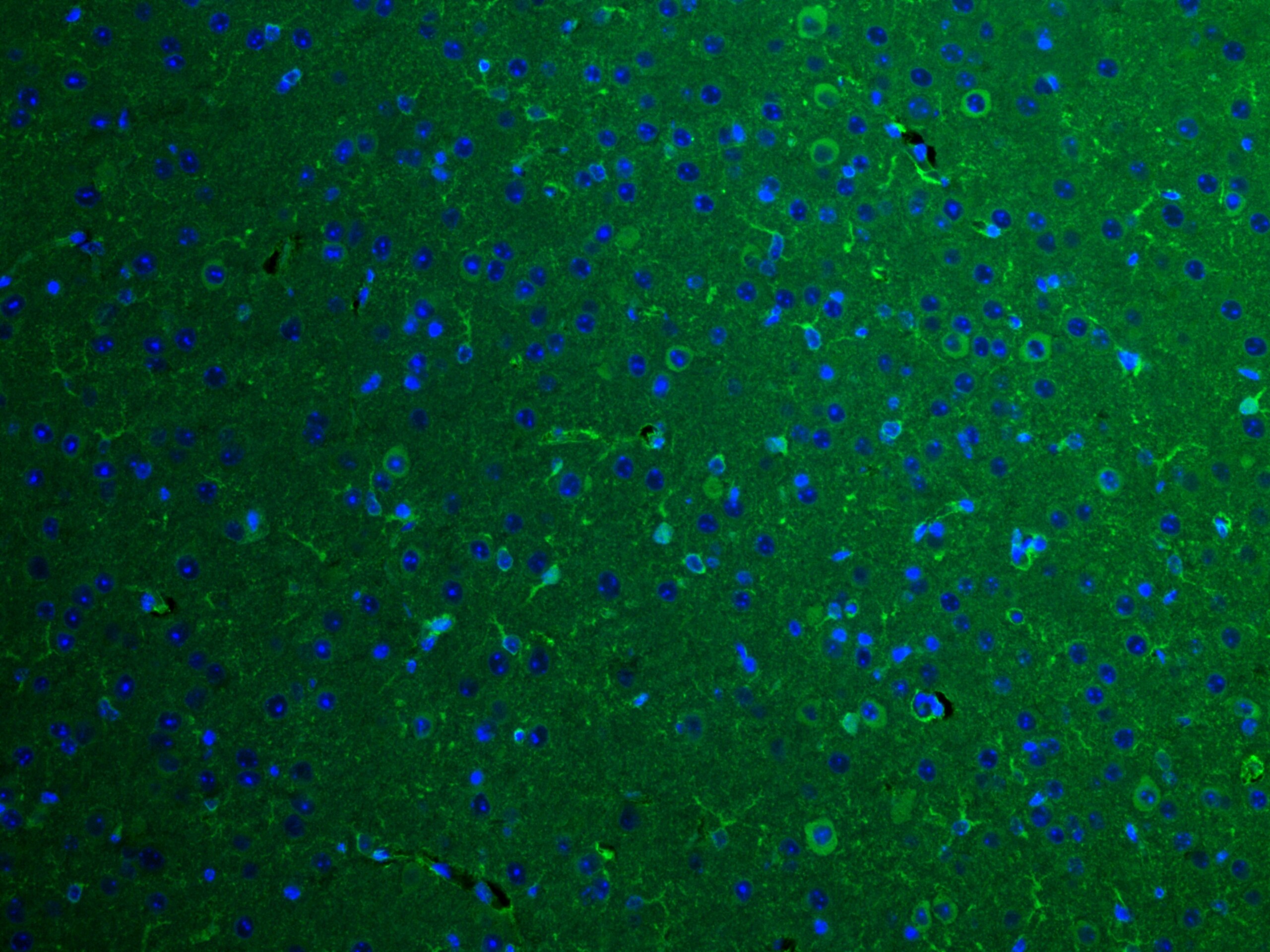Anticorps Monoclonal anti-BRE
BRE Monoclonal Antibody for WB, IHC, IF-P, ELISA
Hôte / Isotype
Mouse / IgG2a
Réactivité testée
Humain, rat, souris
Applications
WB, IHC, IF-P, ELISA
Conjugaison
Non conjugué
CloneNo.
2E5A5
N° de cat : 66356-1-Ig
Synonymes
Galerie de données de validation
Applications testées
| Résultats positifs en WB | tissu cérébral humain fœtal, tissu cérébral de rat |
| Résultats positifs en IHC | tissu cérébral de souris, tissu de gliome humain il est suggéré de démasquer l'antigène avec un tampon de TE buffer pH 9.0; (*) À défaut, 'le démasquage de l'antigène peut être 'effectué avec un tampon citrate pH 6,0. |
| Résultats positifs en IF-P | tissu cérébral de souris, |
Dilution recommandée
| Application | Dilution |
|---|---|
| Western Blot (WB) | WB : 1:500-1:2000 |
| Immunohistochimie (IHC) | IHC : 1:50-1:500 |
| Immunofluorescence (IF)-P | IF-P : 1:50-1:500 |
| It is recommended that this reagent should be titrated in each testing system to obtain optimal results. | |
| Sample-dependent, check data in validation data gallery | |
Informations sur le produit
66356-1-Ig cible BRE dans les applications de WB, IHC, IF-P, ELISA et montre une réactivité avec des échantillons Humain, rat, souris
| Réactivité | Humain, rat, souris |
| Hôte / Isotype | Mouse / IgG2a |
| Clonalité | Monoclonal |
| Type | Anticorps |
| Immunogène | BRE Protéine recombinante Ag2256 |
| Nom complet | brain and reproductive organ-expressed (TNFRSF1A modulator) |
| Masse moléculaire calculée | 383 aa, 44 kDa |
| Poids moléculaire observé | 42-47 kDa |
| Numéro d’acquisition GenBank | BC001251 |
| Symbole du gène | BRE |
| Identification du gène (NCBI) | 9577 |
| Conjugaison | Non conjugué |
| Forme | Liquide |
| Méthode de purification | Purification par protéine A |
| Tampon de stockage | PBS with 0.02% sodium azide and 50% glycerol |
| Conditions de stockage | Stocker à -20°C. Stable pendant un an après l'expédition. L'aliquotage n'est pas nécessaire pour le stockage à -20oC Les 20ul contiennent 0,1% de BSA. |
Informations générales
BRE, also named as BRCC45, is a death receptor-associated antiapoptotic protein, which is also involved in DNA-damage repair, and K63-specific deubiquitination. BRE and its XIAP-sustaining mechanism could represent novel targets for anti-cancer therapy. BRE may regulate TNF-alpha signaling through its interactions with TNFRSF1A. It plays a role in homeostasis or cellular differentiation in cells of neural, epithelial and germline origins. BRE gene has four isoforms with MW 42-47 kDa.
Protocole
| Product Specific Protocols | |
|---|---|
| WB protocol for BRE antibody 66356-1-Ig | Download protocol |
| IHC protocol for BRE antibody 66356-1-Ig | Download protocol |
| IF protocol for BRE antibody 66356-1-Ig | Download protocol |
| Standard Protocols | |
|---|---|
| Click here to view our Standard Protocols |
